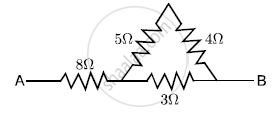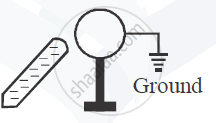Advertisements
Advertisements
Question
- Name and state the law which relates the potential difference and current in a conductor.
- What is the necessary condition for a conductor to obey the law named above in part (a) ?
Solution
- The law is called Ohm's law. It states that the current flowing through the conductor is directly proportional to the potential difference across the ends of the conductor, given that the temperature remains constant.
- The temperature should remain constant.
APPEARS IN
RELATED QUESTIONS
Find the resistance of a conductor if 0.24 A current is passing through it and a potential difference of 24 V is applied across it.
Which of the following is an ohmic resistance?
In the circuit shown below in Fig, calculate the value of x if the equivalent resistance between A and B is 4 Ω.

Calculate the effective resistance across AB?

A metal sphere is kept on an insulting stands. A negatively charged rod is brought near it, then the sphere is earthed as shown. On removing the earthing, and taking the negatively charged rod away, what will be the nature of charge on the sphere? Give reason for your answer.

What are non-ohmic conductors? Give one exmaple. Draw a current-voltage graph for a non-ohmic conductor.
The heat produced by a 100 w heater in 2 minute is equal to
A current of 3.2 mA flows through a conductor. If charge on an electron is - 1.6 × 10-19 coulomb, find the number of electrons that will pass each second through the cross section of that conductor.
